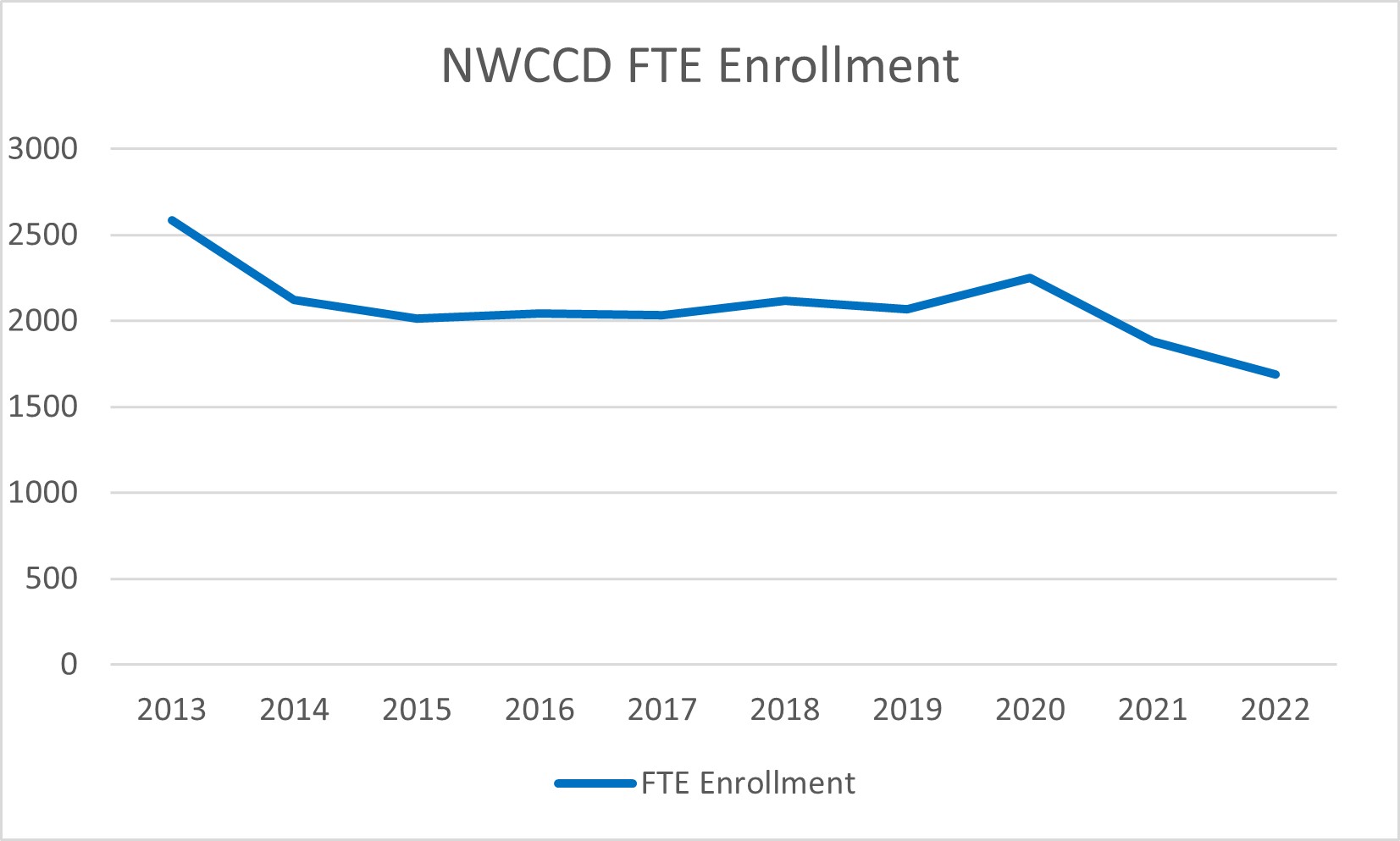Northern Wyoming Community College District has an enrollment problem, and it plans to do something about it. In 2020, as part of the district’s response to the COVID-19 pandemic, NWCCD eliminated all athletic programming, except rodeo. That decision spurred Gillette College, which had been part of the NWCCD, to seek voter approval to go its own way.
Gillette College got that approval in August 2021, and left the NWCCD with a $2M budget hole. Closing that hole will require a change of plan. That plan, which NWCCD President Walt Tribley introduced earlier this week, involves recruiting 300 new FTE students.
Now, 300 FTEs may not seem like a lot, but NWCCD only had 1,687 FTE in 2022, the year after Gillette College took its ball and went home. The proposal is to increase enrollment by 16%. To illustrate the problem with that plan, one only needs to look at the enrollment trends for NWCCD for the last 10 years.

Bringing in 300 FTE students will generate more than $3M, more than enough to close the budget hole. In 2020 – just prior to the onset of the pandemic – NWCCD notched a FTE enrollment of 2,250, its highest since 2013. NWCCD has a graduation rate of 37%, and its former students have a median annual salary of about $39,500.
Part of the plan involves attracting older students. According to Tribley, the median age for NWCCD students is 19. (Based on the information in NWCCD’s most recent enrollment data, the median age is about 22.) 22 is still within the range of the traditional college student, but according to Tribley, the school will begin offering night classes to attract more working adults. The school will also offer more online classes. Currently, 21% of NWCCD’s students are enrolled in online-only classes.
Lots of ways to address enrollment declines
Curiously, the plan doesn’t involve trying to enroll more sub-18 dual-enrolled students. Right now, about 21% of NWCCD’s college students are not yet eligible to vote. It also doesn’t involve investing in new academic programs that are tied to high-wage, high-demand jobs, or emerging industries in Wyoming, which would immediately attract working adults.
The plan also doesn’t involve attempting to retain some of the 36% of students who withdraw without completing a degree. Apparently, it’s easier to recruit new students than it is to retain existing ones. Nor does the plan involve encouraging students to register for more credit hours each semester. Prior to the split, students averaged 10.64 credit hours per year. After the split, the remaining students averaged 10.28 credit hours per year. Raising NWCCD’s credit hour activity by 9,000 hours per year- which is effectively what the president proposes – would mean persuading all enrolled students to increase their semester enrollments by one credit hour each.
The last approach might involve creating a collection of intensive 5-week, one-credit courses that could fulfill general education or elective requirements. Students could complete as many as three of these courses in a semester, and if they proved to be popular among students, NWCCD may not have to recruit as many new students to improve its fiscal outlook.
There’s an old saying … something about skinning a cat…
Photo Credit: Anders Lejczak , via Flickr
























